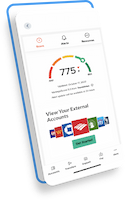Unbelievable though it might be, the new year is almost upon us — and with it comes another opportunity to start fresh and get serious when it comes to good financial housekeeping.
But without a solid savings plan in place, it can be easy to falter. As easy as it seems to save money (just stop spending so much, right?!), anyone who’s actually set themselves to the task probably knows it’s not that simple.
Don’t get us wrong: it’s going to take concentration and effort. But we’ve gathered some money-saving tips that could help you jump-start your New Year’s savings goals and keep up the good work well beyond January or February.
Here are some of the most important steps to habitually saving money.
1. Track your spending.
It helps to tell your money where to go if you don’t know where it’s gallivanting off to in the first place — which is why tracking your expenses is a critical first step to better financial hygiene. Once you see for your own eyes how much cash floats away with happy hour drinks or your morning latte habit, you might feel motivated to find more affordable stand-ins for those habits.
Tracking your spending could also alert you to budgetary redundancies, which could be great places to consider making some cuts. For example, if you’re paying for three different online streaming subscriptions, maybe you could cut back to just one or two — or maybe getting on a family cell phone plan with your partner would help both of you save a little bit extra each month. Be sure to check out your regular monthly expenses, too. How often are you grabbing impulse buys at the grocery store? How high is your electric bill? Are there ways to be more intentional when grocery shopping or more energy-efficient around the house?
These days, it’s easier than ever to get a bird’s eye view of your budget, thanks to online banking and apps that aggregate your checking account, auto loan, credit cards, and more. Then again, the pen-and-paper route could also be fruitful: there’s nothing like hand-writing your expenses to really make it hit home how much you’re spending.
2. Start with an emergency fund.
If you’re dealing with debts on top of ever-present bills, it might feel impossible to stash any cash away for the future. Add in bigger long-term financial goals like homeownership and retirement, and the project just gets even more overwhelming.
But if there’s one thing you can count on in life aside from death and taxes, it’s the fact that unexpected financial emergencies will crop up — and having a solid emergency fund is imperative for ensuring those “uh-ohs” don’t turn into out-and-out catastrophes. You may have also heard that it is recommended to have three to six months of living expenses (see why it’s so important to know how much you’re spending?), but that likely-five-figure total is a lot of money to save, which could be overwhelming in its own right.
So start with an achievable goal: maybe you could set aside $50 each week, or each pay period. Maybe you could set aside $100. Start by slowly saving up $1,000 — which isn’t enough to cover very much of an emergency, but it might get you out of minor car trouble or an unexpected trip to the vet, for instance.
Not sure where to find the cash? Head back to those budgeting apps or your spreadsheet and take a look at where you see overspending or splurges. If you’re running out of expenditures to cut, you might consider making bigger money moves, like refinancing your student loans or trying to find cheaper car insurance.
Every little bit counts, so long as you follow the cardinal rule of emergency funds: don’t touch it unless you actually absolutely need to! Do yourself an additional favor by stashing the cash in an interest-earning savings account, so the money could grow, albeit slowly, while you’re waiting. The interest in even a high-yield savings account may be relatively low, but it may have lower risk than other options.
3. Get strategic about debt repayment.
Once you’ve got a working budget and a little bit of a cushion, you may want to start to focus your efforts on paying down debts. Interest fees, particularly from credit card debt, could act like a drain, seeping away all of your extra cash and making it impossible to meet ongoing financial goals — or to save anything for the future. On top of all of that, debt also has a unique ability to wreak havoc on your credit score but not always.
If you want to ditch debt as an essential part of your saving money, what are some possible ways to do that?
Two commonly recommended tactics are known as the snowball method and the avalanche method. In both cases, you continue to make your minimum monthly payments on time for all debts you owe. But with the avalanche method, you also put additional money toward your highest-interest-rate debt, working to pay it down as quickly as you can afford. Once that debt is taken care of, you move down the line to the next-highest interest rate, and so on.
The snowball method works from the bottom up, instead: you choose the debt with the lowest account balance and pay that one off as quickly as you can, and then move up to the next-lowest balance, and so on. This method could be very motivating because it gives you the opportunity to feel the gratification of actually paying off a whole account sooner than later.
There are basic tips that could lay the foundation to help you continue to save money — and help spend money wisely, too. Both checking and savings accounts could be valuable tools in the art and science of money management, and Quontic offers options that could help put money back into your pocket, such as debit cards that offer cash-back or Bitcoin rewards. Quontic also offers free online Savings, Budget and Debt calculators that may provide some assistance with your planning. Still have questions? Call, chat, or email us today — we’re happy to help!
Disclaimer:
This is not financial advice, nor should it constitute or be construed as instruction for any individual reader, or group of readers, to act or make a decision in any financial capacity. Seeking independent, professional consultation from a qualified and licensed expert is always the optimum avenue in making financial decisions.





